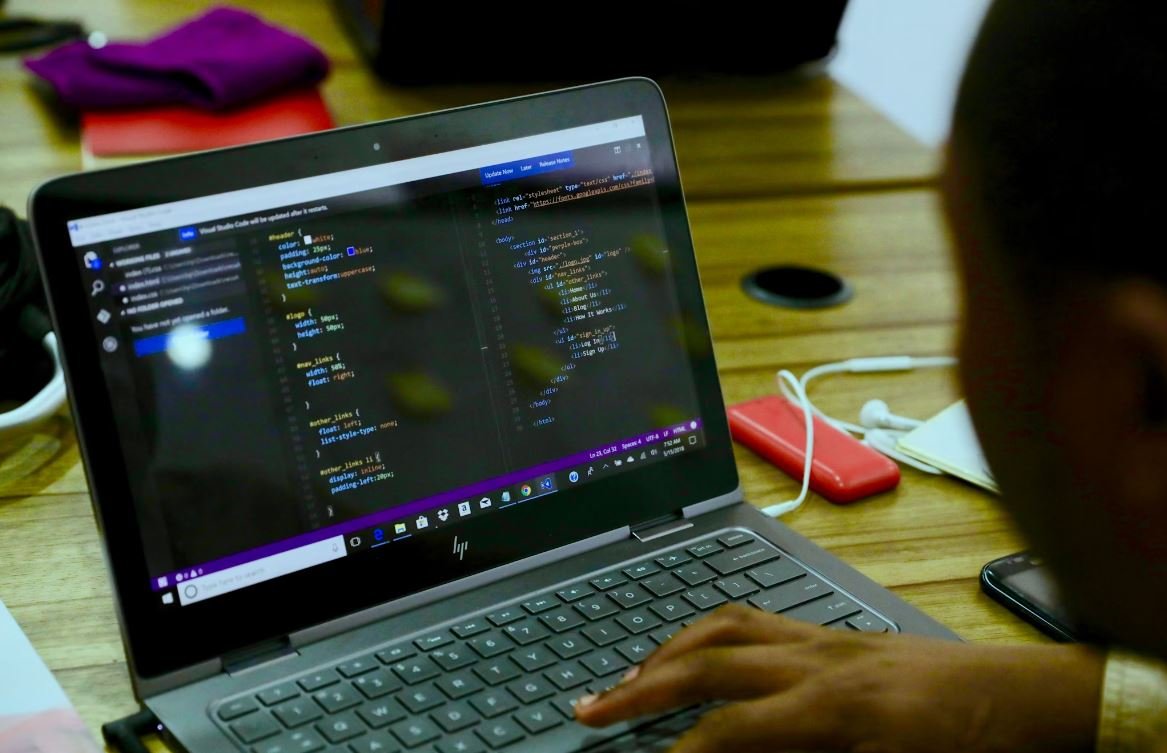Deepfake: How to Make
Deepfake is a technique that uses artificial intelligence to create realistic fake videos or images that appear to be authentic. While deepfakes can be entertaining, they also pose significant risks in terms of misinformation and the potential for misuse.
Key Takeaways
- Deepfake technology uses AI to create convincing fake videos or images.
- Deepfakes can be used for entertainment or carried out for malicious purposes.
- Identifying and combating deepfakes requires technological advancements and awareness.
**Deepfake** technology has gained significant attention in recent years due to its ability to manipulate visual and audio content with remarkable accuracy. *This technique uses deep learning algorithms to analyze and synthesize existing images or videos, enabling the generation of realistic deepfakes.* The term “deepfake” itself is a combination of “deep learning” and “fake.”
Understanding Deepfake Creation
Creating deepfakes involves several steps, including data collection, training, and synthesis. The process typically begins with collecting a large dataset of images or videos featuring the target person. **Machine learning** models are then trained on this dataset to develop a deep understanding of the subject’s facial features and expressions.
- Data collection involves gathering a large number of images or videos of the person to be impersonated.
- Machine learning models, such as **generative adversarial networks (GANs)**, are used to analyze and learn from the collected data.
- Once trained, the model can generate new images or videos featuring the target person, even if the source content does not exist.
**Generating a convincing deepfake** requires a powerful computing infrastructure and significant computational resources. *These resources allow the AI model to generate high-quality deepfakes with realistic facial movements and audio synchronization.*
While deepfakes initially gained attention for their potential in entertainment and visual effects industries, they have raised serious concerns about their potential misuse.
The Risks of Deepfakes
Deepfakes pose significant risks in various domains, including politics, business, and personal lives. *The potential consequences of deepfake technology include the spread of misinformation, damage to reputations, and even political manipulation.*
- In politics, deepfakes can manipulate public opinion by creating fake videos of politicians engaging in inappropriate behavior or making false statements.
- Businesses can suffer reputational damage if deepfakes are used to impersonate their executives or spread false information about their products or services.
- On a personal level, deepfakes can be used for harassment, revenge porn, or blackmail.
Addressing the challenges posed by deepfakes requires a combination of technological advancements and increased awareness. **Detecting** deepfakes can be a complex task, but researchers are continuously developing algorithms and tools to identify manipulated content. Additionally, promoting media literacy and critical thinking skills can help individuals recognize and verify information more effectively.
Data Points: Deepfake Impact
| Domain | Impact |
|---|---|
| Politics | Undermining trust, smearing reputations |
| Business | Reputational damage, spreading false information |
| Personal | Harassment, revenge porn, blackmail |
Another important aspect in combating deepfakes is the development of **countermeasures**. Researchers are exploring different techniques, such as using cryptographic hash functions to watermark authentic content or developing AI models specifically designed to detect deepfakes. Moreover, collaborations between tech companies, policymakers, and researchers are crucial to establish guidelines and regulations to mitigate the risks associated with deepfakes.
Methods to Counter Deepfakes
- Watermarking authentic content to safeguard against tampering.
- Developing specialized AI models to detect signs of manipulation.
- Policy collaborations to establish regulations and guidelines to combat deepfake misuse.
Deepfake technology continues to evolve, and its potential implications are far-reaching. While there are genuine concerns about the misuse of deepfakes, it is also important to acknowledge the positive applications of this technology, such as in the entertainment industry. *As technology progresses, it becomes increasingly crucial to stay vigilant, educated, and adaptive in order to navigate the challenges and opportunities presented by deepfakes.*
Data Points: The Future of Deepfakes
| Challenges | Opportunities |
|---|---|
| Misinformation and manipulations | Enhanced special effects and creative possibilities |
| Reputational damage and privacy concerns | Improved awareness and countermeasures |
| Regulatory and ethical considerations | Advancement in media verification technologies |

Common Misconceptions
Misconception 1: Deepfakes are always used for malicious purposes
One common misconception about deepfakes is that they are solely created to deceive or manipulate others. While there have been cases where deepfakes have been used in harmful ways, it is important to note that not all deepfakes are created with malicious intent. In fact, deepfake technology has a wide range of potential applications, including entertainment, education, and research.
- Deepfakes can be used to create realistic special effects in movies and TV shows.
- They can also be utilized for educational purposes, such as simulating historical figures for interactive learning experiences.
- Researchers can leverage deepfakes to study human behavior, facial recognition systems, and more.
Misconception 2: Deepfakes are always flawlessly realistic
Another misconception is that all deepfakes are indistinguishable from real videos or images. While advancements in deepfake technology have made it possible to create highly convincing manipulations, there are often still telltale signs or artifacts that can help identify a deepfake. Common flaws include imperfect facial movements, irregularities in lighting or shadows, and inconsistencies in the background.
- Irregular eye movements and blinking patterns can be a red flag for identifying deepfakes.
- Blurriness or unnatural skin tones can be evidence of a manipulated video.
- Inconsistencies in the background or surroundings can also indicate a deepfake.
Misconception 3: Deepfakes are always created using AI
While artificial intelligence (AI) technology plays a significant role in the creation of deepfakes, it is not the only method employed. Deepfakes can also be created manually using traditional editing techniques, although the results may not be as realistic. Additionally, there are different approaches to creating deepfakes, with some methods relying more on AI algorithms and others using a combination of AI and manual editing.
- Manual deepfake creation involves manually manipulating the video or image without the aid of AI algorithms.
- An AI-driven approach involves training neural networks to generate or modify visuals to create deepfakes.
- Some creators combine AI technology with their editing skills to refine the deepfake and enhance its realism.
Misconception 4: Deepfakes are only used for impersonation or revenge
One prevalent misconception is that deepfakes are primarily used for impersonation or revenge. While it is true that deepfakes have been misused in such ways, it is essential to understand that deepfake technology can be put to positive uses as well. For instance, it can be employed for art installations, political commentary, satirical content, or even comedic purposes.
- Deepfakes can be used to create satirical videos or parodies, adding humor to social commentary.
- Artists and performers may use deepfakes to explore and challenge ideas of identity and authenticity.
- Political activists may utilize deepfakes as a form of dissent and protest.
Misconception 5: Deepfake detection methods are foolproof
Finally, there is a misconception that all deepfake detection methods are foolproof and can easily identify manipulated content. While considerable progress has been made in developing deepfake detection techniques, it remains a challenge, especially as deepfake generation technology continues to evolve. As deepfakes become increasingly sophisticated, new detection methods need to be constantly developed and refined.
- Current deepfake detection methods often rely on analyzing facial movements, inconsistencies, or unusual visual artifacts.
- Researchers are exploring AI-based algorithms to detect deepfakes by analyzing patterns in the generated content.
- Combining multiple detection techniques is becoming crucial to improve the accuracy of identifying deepfakes.

Understanding Deepfake Technology
Deepfake technology has become a prevalent issue in today’s digital world. With the ability to manipulate and fabricate audio and video content, deepfakes have the potential to cause significant harm. It is important to familiarize ourselves with the extent of this technology’s capabilities and its potential consequences. The following tables present various aspects and examples of deepfake technology.
The Rise of Deepfake Videos
Deepfake videos have gained immense popularity due to their ability to superimpose people’s faces onto the bodies of others, creating convincing yet fabricated footage. This table provides an overview of noteworthy deepfake videos and their impact.
Implications of Deepfake in Politics
Political deepfakes have emerged as a concerning element in the realm of disinformation campaigns. This table highlights instances of deepfake-related political incidents, raising awareness about their potential consequences.
Deepfake in Cybersecurity
Deepfake technology poses a significant threat to cybersecurity as it can be used to deceive and manipulate digital identities. The table below demonstrates the impact of deepfakes on various cybersecurity aspects.
Deepfake in Entertainment and Celebrity Culture
This table showcases instances where deepfake technology has been utilized in the entertainment industry, blurring the lines between reality and fiction. It explores how deepfakes have impacted the perception of celebrities and popular culture.
Deepfake and Law Enforcement
Law enforcement agencies face numerous challenges when it comes to identifying and combating deepfakes. The table below provides examples of deepfake-related incidents that have impacted law enforcement activities and investigations.
The Ethical Dilemma of Deepfake Creation
Creating and sharing deepfakes raises several ethical concerns, including privacy infringement and the potential damage to one’s reputation. This table delves into the ethical implications surrounding the creation and distribution of deepfakes.
Combatting Deepfake Technology
Efforts are underway to develop techniques and tools to detect and prevent the spread of deepfakes. The table below presents various countermeasures and strategies employed to combat the proliferation of deepfake technology.
Deepfake in Journalism
Deepfakes have the potential to disrupt the integrity of journalism and the dissemination of accurate information. This table explores instances where deepfakes have impacted the credibility of news reporting.
The Future Impact of Deepfake Technology
As deepfake technology continues to advance, it is crucial to consider its potential future implications. This table provides an insight into anticipated developments and their potential impact on society.
Conclusion
Deepfake technology has rapidly evolved, representing both a creative tool and a serious threat. The tables presented throughout this article shed light on its implications in various aspects of our lives, including politics, cybersecurity, entertainment, and journalism. As the technology continues to develop, it is vital to prioritize efforts on combating deepfakes, raising awareness, and implementing safeguards to mitigate its potential negative impact.
Frequently Asked Questions
What is a deepfake?
A deepfake refers to the use of artificial intelligence to manipulate or generate media, typically video or images, that appears realistic but is actually synthesized or altered.
How are deepfakes created?
Deepfakes are created using machine learning algorithms, specifically deep neural networks. These networks are trained on a large dataset of images or videos and learn to mimic the characteristics of the input data, enabling them to generate or modify content to create a deepfake.
What are the potential uses of deepfakes?
Deepfakes can be used for various purposes, such as entertainment, online memes, and parody videos. However, they also have the potential to be misused for malicious activities, such as spreading misinformation, creating fake news, or impersonating individuals.
Are deepfakes dangerous?
While deepfakes can be harmless and entertaining, they also pose significant risks. Deepfakes have the potential to deceive and manipulate people, jeopardize the authenticity of visual media, and undermine trust in audiovisual content.
How can deepfake technology be used to fight against misinformation?
Deepfake detection technology can be developed to detect and identify manipulated media. Researchers are working on developing tools and techniques to combat deepfakes and prevent their widespread abuse.
Can deepfakes be used for positive purposes?
While the negative implications of deepfakes are concerning, there are potential positive applications as well. Deepfake technology can be used in fields like entertainment, video production, virtual reality, and special effects to create realistic and immersive experiences.
Are there any laws or regulations regarding deepfakes?
Laws and regulations regarding deepfakes vary by country. Some jurisdictions have started to enact legislation or propose regulations to address deepfake-related issues, including criminalizing the creation and distribution of deepfakes without consent.
How can individuals protect themselves from falling victim to deepfake manipulation?
To protect oneself from falling victim to deepfake manipulation, it is essential to be cautious and critical of the media consumed online. Verify the authenticity of videos or images from trusted sources, be skeptical of highly realistic content, and stay informed about emerging deepfake detection technologies.
Where can I find deepfake detection tools?
Various organizations and researchers are actively working on developing deepfake detection tools. Some examples include Deeptrace, Sensity, and DARPA’s Media Forensics program. It is advisable to consult trusted sources and stay updated on the latest advancements in deepfake detection technology.
What are some ethical concerns surrounding the use of deepfake technology?
Ethical concerns related to deepfakes include unauthorized use of someone’s likeness, potential impact on privacy and consent, media manipulation, and the dissemination of false information. It is crucial to consider the ethical implications and potential harm resulting from the misuse of deepfake technology.




